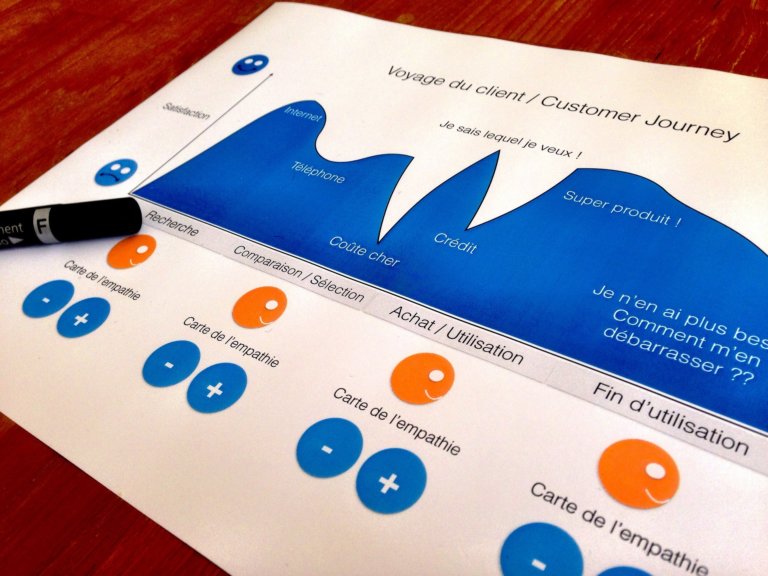Your brand is not what you think it is! It’s what your customers think it is; its brand image, personality and value to them.
I was lecturing at Miami University a few years ago on brand image and personality. These topics created a lot of interest and discussion, which they should, being two vital elements of branding. They need to be clear and consistently represented in all brand communications.
If you’re having issues with your own brand in either of these areas, you’ll find the following article both interesting and valuable.
Why We Buy Brands
According to Wikipedia, a brand is:
“a set of marketing and communications methods that help to distinguish a company from competition and create a lasting impression in the minds of customers.”
Although this definition in my opinion, is a little sterile for something as exciting as branding, I do appreciate that it mentions customers. However, for me, a brand is created in both the minds and hearts of its customers.
There has been so much said about the importance of emotions and resonating with the customer, that we shouldn’t forget it. But be honest we often do! And this is where image and personality play vital roles. They are both more or less created in the heart, rather than in the mind of the customer.
We usually buy brands without even knowing why we buy them. We can, of course, provide a clear, reasoned answer if asked, but explanations come from the mind. The heart is what makes us buy.
Branding Elements
A brand is made up of a number of components, with which people learn to identify and recognise it. These include its logo, colour, pack, shape, taste, aroma, sounds and feel. There may also be other things that are directly associated with the brand, such as a celebrity, an event or a cause it supports.
A brand needs to have a clear image, personality and equity in the minds of its customers. These come not only from these branding elements but also from the customer’s own personal experience with it.
All these factors must be respected and complementary to build a strong brand with which customers can identify themselves. Therefore, It is vital for marketers to know and understand what their brand means to its customers, not just to their organisation.
Brand Image Essentials
A brand is associated with many thoughts and ideas, that we translate into statements or attributes for measurement purposes. These are what current and potential customers think or feel about it. They may have developed from exposure to its communications, as well as from their own personal experiences.
These elements are usually grouped into three types: the rational/functional benefits, the subjective/emotional elements and the cultural/relational factors.
The third group was added by David Armano of Edelman Digital more than 15 years ago. I like his additional idea because the relationships a brand builds with its customers have become vitally important in today’s social-media-dominated world. I have noticed that he recently started referring to these as societal rather than relational, in line with the more usual vocabulary.
- Rational / Functional: benefits include things on which most people would agree and recognise. For example, it is crunchy, colourful, available everywhere or delivered in a glass bottle. There would be very little discussion or disagreement on these.
- Emotional / Subjective: elements that can vary between customers based on their personal experience and appreciation of the brand. These might include good value for money, better quality, or the best service.
- Cultural / Relational (Societal): factors which are associated with a brand’s trust and responsibility. Customers today are increasingly interested in how a brand or corporation addresses its use of resources and whether or not they are sustainable and ecological. Brands also depend on recommendations from others, so word of mouth and opinions, especially online, have become vital additional sources of reputation. The attributes measured to cover these sensitivities could include trustworthy, a brand I’d recommend or cares about its customers.
Measuring Brand Image
I am often surprised by the lack of understanding about how to measure brand images when I work on branding issues with clients. Even large companies don’t do a good job of it in general. And some have never even measured it, preferring financial to customer metrics to manage their businesses!
Other organisations measure too frequently, in the hope that their latest advertising campaign has had the desired impact. This is rarely the case, as images take time to change.
Another problem I find with many clients when I first start working with them is that the choice of attributes is often sub-optimal, to be polite. The factors included should be selected to cover all the main elements of your desired image as well as that of the competition.
I have also seen clients happy that they are scoring better than their competitors. However, when I examine their metrics, I find that they are missing those attributes that would better represent their competitors’ brands. No wonder their own brand is doing better!
A further mistake I encounter is trying to measure advertising slogans. While it is important to understand whether your message is heard and understood, this should not be done in a brand image survey. Advertising slogans should be evaluated through a communications test.
Brand Personality & Values
Brands have personalities, just like people. It was Schwartz who first identified the ten human values which make up our personalities. They are important to understand especially for regional and global brands because they cut across cultures.
Our values also determine our behaviour. Plato identified the typical patterns of human behaviour, which he called archetypes. The Swiss psychologist Jung then used this concept in his theory of the human psyche. But it wasn’t until Margaret Mark that they were first correlated with brands, in her excellent book “The Hero and the Outlaw.”
Brands can represent any of the twelve archetypes, which are usually divided into four subgroups, as follows:
- Stability, control: Caregiver, Ruler, Creator
- Risk, achievement: Hero, Rebel, Magician
- Belonging: Lover, Jester, Everyman
- Learning, freedom: Innocent, Sage, Explorer
It is important to understand how customers perceive your brand. Your brand’s personality should resonate with your customers, either because they are similar, or because they provide the dream lifestyle your customers desire.
Conclusions
A marketer’s role is primarily to defend and grow its brand’s image and equity through a strong personality and consistent communications. If you are not succeeding in all these areas then you are almost certainly being challenged by weakening sales.
It is an interesting and often overlooked fact that brand image usually declines before sales do, so it is an invaluable indicator of your brand’s health. If you would like to learn more about measuring and analysing brand image, there are several chapters dedicated to the topic in my book “Winning Customer Centricity”.
Branding is one of the four essential elements of a customer-first strategy that is included in the Quantum Customer Centricity Model. Why not book a call to learn more about how to optimise your brand’s image and







